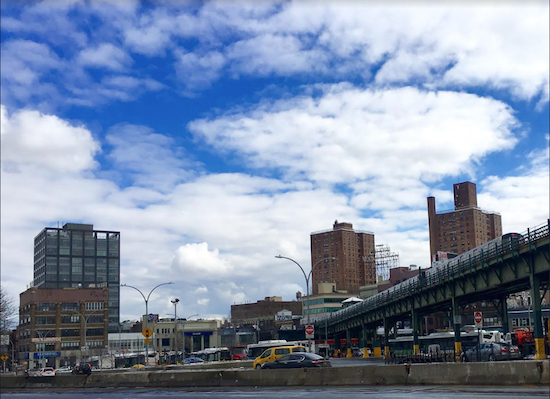Check out Williamsburg Bridge Plaza’s banks from bygone days
Eye on Real Estate: Landmark-worthy Dime Savings Bank of Williamsburgh is one of them

A busy highway runs past Williamsburg Bridge Plaza, which is surrounded by century-old bank buildings. Eagle photos by Lore Croghan
Once upon a time, Williamsburg Bridge Plaza was more than a bus terminal. Way more.
At the beginning of the 20th century, the area around it became the Numero Uno financial center for the Eastern District, as the Williamsburg-Greenpoint-Bushwick area was then called.
That’s because the 1903 opening of the Williamsburg Bridge drew businesses away from the East River waterfront to the area around the plaza, which was a terminal for trolleys that traveled across the bridge.
